Explore Gastric Bypass Options and Costs in Mexico
Explore affordable gastric bypass surgery in Mexico, offering significant savings and quality care compared to the US and Canada. Scroll down and learn about costs, expert surgeons, and all-inclusive packages.
How Much Is Gastric Bypass in Mexico?
Gastric bypass surgery in Mexico starts at $5,495, covering hospital stays, pre and post-op tests, ground transfers, and more.
The same surgery without medical insurance in the US costs $18,900 and $20,000 in Canada.
Therefore, you can save up to 72% with gastric bypass in Mexico compared to the US or Canada.
Cost of Gastric Bypass in Mexico vs US/Canada
| Procedure | Cost | Savings in Mexico |
|---|---|---|
| Gastric Bypass in Mexico | $5,495 | – |
| Gastric Bypass in US | $18,900 | 70% |
| Gastric Bypass in Canada | $20,000 | 72% |
*The prices may vary with case complexity.
Cost of Gastric Bypass in Mexican Cities
Curious to know the prices of gastric bypass in different Mexican cities? Check out the table below!
Cost of Gastric Bypass in Mexican Cities
| City | Cost |
|---|---|
| Tijuana | $5,495 |
| Reynosa | $5,299 |
| Mexicali | $5,950 |
| Piedras Negras | $6,500 |
| Nuevo Laredo | $6,799 |
| Puerto Vallarta | $6,900 |
| Cancun | $6,995 |
*The prices may vary with case complexity
Ready to take the first step?
Gastric Bypass All-Inclusive Package
With transparent pricing and top-notch medical facilities, we also offer an all-inclusive package.
You can explore our all-inclusive packages for gastric bypass in Mexico. It includes:
Still worried about the expenses? Financing is also available for your weight loss surgery in Mexico!
Scroll down to learn more!
How To Finance Your Gastric Bypass in Mexico?
When it comes to your weight loss surgery, financial concerns shouldn’t hold you back.
For your convenience, we provide various payment choices along with financing alternatives.
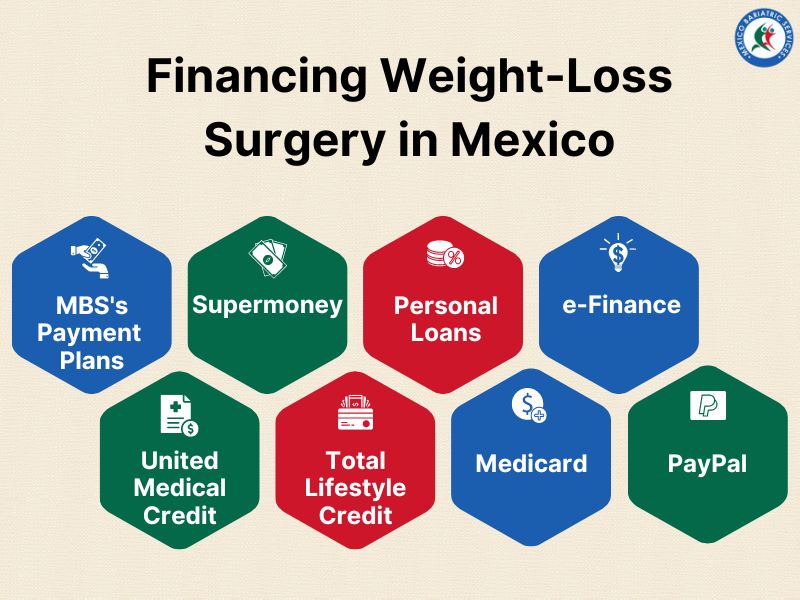
You can also explore options for financing weight loss surgery in Mexico here!
Let’s explore gastric bypass options in other Mexican cities!
Patient Reviews of Gastric Bypass in Mexico
Curious about others’ experiences with gastric bypass in Mexico? Let’s discover patient stories, insights, and the positive impact on their lives.
Gastric Bypass in Mexico: Before and After
Look at the amazing changes in our past patients before and after their gastric bypass surgery in Mexico.

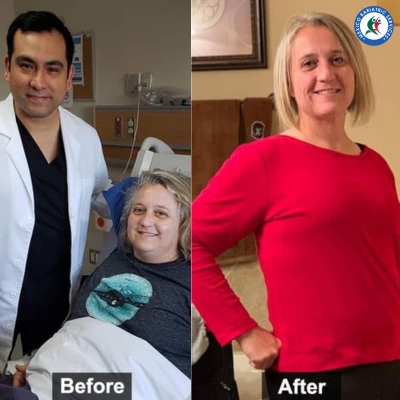
Wondering who will carry out your weight loss surgery? Continue reading to explore!
Top Surgeons for Gastric Bypass in Mexico
Discover the top-notch surgeons specializing in gastric bypass procedures in Mexico.
Meet the experts who bring skill, experience, and dedication to ensure your journey is in the best hands.

Dr. Guillermo Lopez: Tijuana
Experience: 37+ years
Key Highlights:

Dr. Hector Perez: Cancun
Experience: 16+ years
Key Highlights:
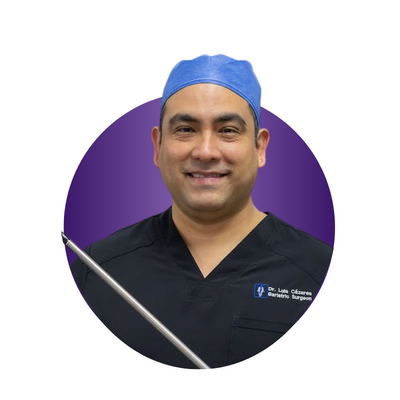
Dr. Luis Cazares: Tijuana
Experience: 11+ years
Key Highlights:
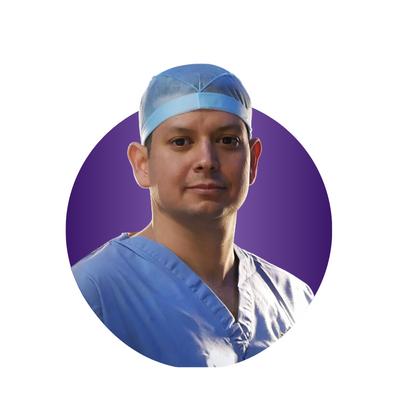
Dr. Galelio Villarreal: Nuevo Laredo
Experience: 13+ years
Key Highlights:

Dr. Oscar Trevino: Reynosa
Experience: 14+ years
Key Highlights:

Dr. Cristobal Garza: Piedras Negras
Experience: 10+ years
Key Highlights:

Dr. Sergio del Hoyo: Puerto Vallarta
Experience: 15+ years
Key Highlights:

Dr. Gilberto Gonzalez: Guadalajara
Experience: 12+ years
Key Highlights:
Want to know if you qualify for the surgery?
Best Gastric Bypass Clinics in Mexico
Finding the right clinic is key to a successful gastric bypass journey.
In Mexico, several top-tier clinics offer exceptional care and expertise in this field.
Explore these clinics in different Mexican cities that lead the way in providing top-notch gastric bypass surgeries.
LIMARP Hospital: Puerto Vallarta
The hospital is situated within the stunning Twin-Towers complex.
It is accredited as an International Center of Excellence for Obesity.
Services offered:

CMQ Premiere Hospital: Tijuana
It’s one of the two private hospitals in Puerto Vallarta listed on the Canadian consulate’s website.
This hospital has obtained international accreditations from:
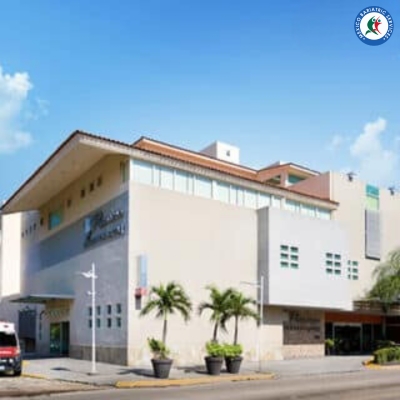
Contact us now to schedule your appointment and kickstart your transformation journey!
Scroll down to uncover the details of the procedure for an informed decision!
Minimally Invasive Gastric Bypass Surgery
Gastric bypass decreases the size of the stomach, which makes you feel full more quickly.
It also makes food bypass part of the small intestine, resulting in the absorption of fewer calories and nutrients.
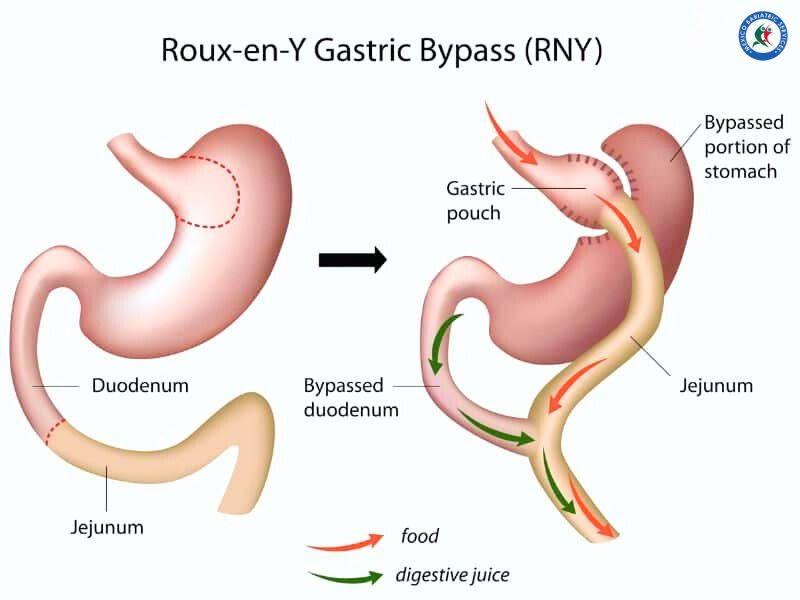
A Step-by-Step Explanation of Gastric Bypass Surgery
Your surgeon will administer general anesthesia prior to your surgery.
Step 1: Creating a Smaller Stomach
Step 2: Rerouting Digestion
Source: Medline Plus(1)
Surgery Takeaways of Gastric Bypass
| Length of Procedure | Hospital Stay | Resumption of Work |
|---|---|---|
| About 1 ½ hour | 4-6 days | 3-6 weeks |
Losing weight can reduce the risk of various health issues linked with obesity,(2)such as:
Gastric Bypass can help with 50% to 70% of excess weight loss in the first two years after gastric bypass.(3)
You can also consider a mini gastric bypass in Mexico. It is similar to a gastric bypass surgery but has one shorter procedure and takes less time to perform.
*Weight loss results may vary with each case
Risks of Gastric Bypass Surgery (Roux-en-Y)
While gastric bypass surgery offers transformative benefits, it’s essential to understand and consider the potential risks associated with it.
Understanding them helps you make informed decisions for a safer path to better health. The potential risks may include:
Source: NIH(4)
Check out the video below to learn how you can minimize the risks post-surgery!
If you experience any complications after surgery, it’s recommended to reach out to your surgeon for assistance.
Benefits of Gastric Bypass In Mexico
The average self-pay price of gastric bypass in the US is around $19,000.
However, with gastric bypass in Mexico, it’s possible to save big over US prices. But these initial cost savings aren’t the only advantages.
You’ll potentially save on medications and treatments required for associated health conditions. Other benefits include:
If you are thinking of getting a gastric bypass surgery, Mexico is a good option!
A Closer Look at Recovery
After Gastric Bypass, you’d have to change your diet and lifestyle, especially your eating habits. Remember to take small bites and chew each bite properly.
Source: NHS(5)
Wondering when can you return to work post-surgery? Watch the video for the answers!
However, patients with gastric bypass must be prepared to take additional supplements to avoid deficiencies.
Diet after Gastric Bypass
For the first few months, you’d need to put yourself on a liquid/soft food diet. Here are some things to keep in mind after surgery –
Eating too much may stretch your stomach and impact the success of the surgery.
Who Is a Candidate for Gastric Bypass in Mexico?
Wondering if you are a candidate for Roux-en-Y in Mexico?
Our partner doctors will evaluate your medical documents and may approve you for surgery if you:
Additionally, gastric bypass surgery is suitable for you if you are managing obesity, diabetes, sleep apnea, heart disease, or joint discomfort.
Source: ASMBS(6)
You can also complete our medical questionnaire to assess your eligibility for gastric bypass in Mexico.
Check out the video below for more information!
Gastric Bypass vs Gastric Sleeve
Curious about which procedure to choose, gastric sleeve or gastric bypass? Continue reading!

Difference Between Gastric Sleeve and Gastric Bypass
Typical Patient Trip Schedule
Your transformative experience in gastric bypass surgery awaits in Mexico, guided by a customized trip schedule designed to ensure your comfort and care.
Preparation
Hospital Schedule (Day 1 to Day 3)
First Day: Arrival & Admission
Second Day: Surgery Day
Third-Day: Initial Recovery & Care
Post Surgery
We prioritize your safety as much as you do. Continue reading to discover further details.
Is Gastric Bypass in Mexico Safe?
Ensuring the safety of your health journey during gastric bypass surgery in Mexico is our foremost priority.
Let’s explore why Mexico is a safe choice!
Reputable Track Record: Mexican cities have earned trust for their safe and successful bariatric surgeries.
Expertise of Renowned Surgeons: Surgeons in Mexico follow all the safety standards and prioritize patient well-being.
State-of-the-Art Facilities: Cutting-edge hospitals equipped with advanced technology and strict safety protocols offer a secure surgical environment.
Proven Experience: Thousands of satisfied patients testify to the safety and reliability of the procedures carried out in Mexico.
Positive Testimonials: Verified reviews from previous patients underscore the safety and effectiveness of gastric bypass surgeries.
Patient-Centric Care: From initial assessments to post-operative support, our approach revolves around ensuring your safety and a seamless surgical journey.
Conclusion
Choose safety, affordability, and expertise for gastric bypass in Mexico with us.
Transform your life in Mexico!
References
- Medline Plus: Gastric bypass surgery
- NIH: Substantial Decrease in Comorbidity 5 Years After Gastric Bypass
- Frontiers: Effects of Bariatric Surgery on Cardiovascular Disease: A Concise Update of Recent Advances
- NIH: Roux-en-Y Gastric Bypass Chronic Complications
- NHS: Afterwards – Weight loss surgery
- ASMBS: Is Metabolic and Bariatric Surgery Right for You?
- General Surgery News: Gastric Bypass or Sleeve Gastrectomy?
- NIH: Risk of Dumping Syndrome after Sleeve Gastrectomy and Roux-en-Y Gastric Bypass


